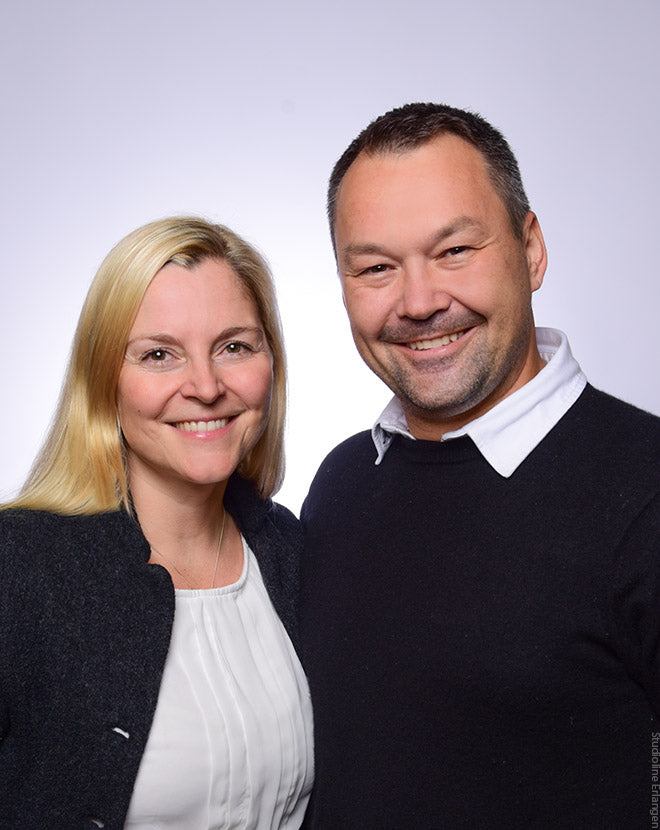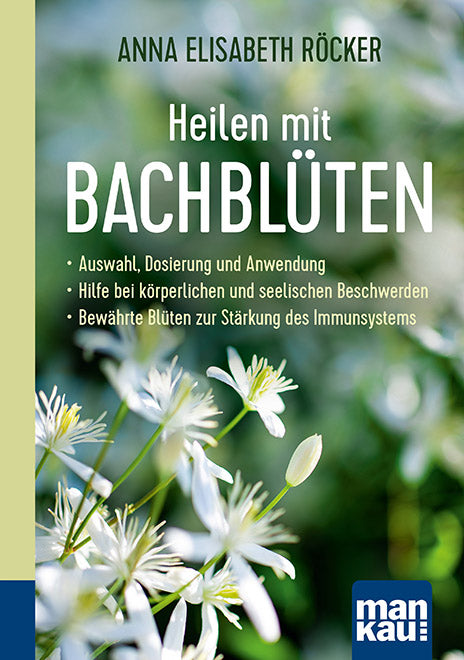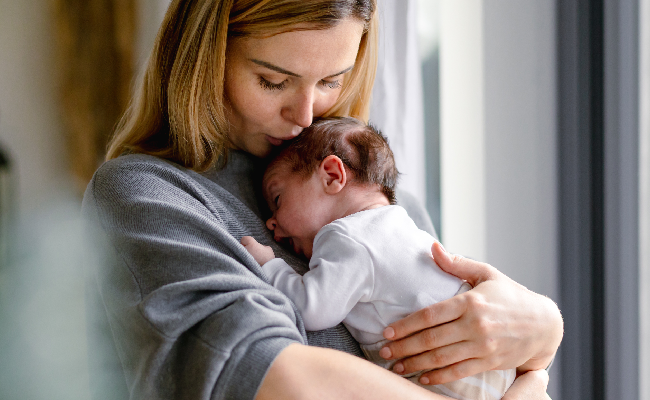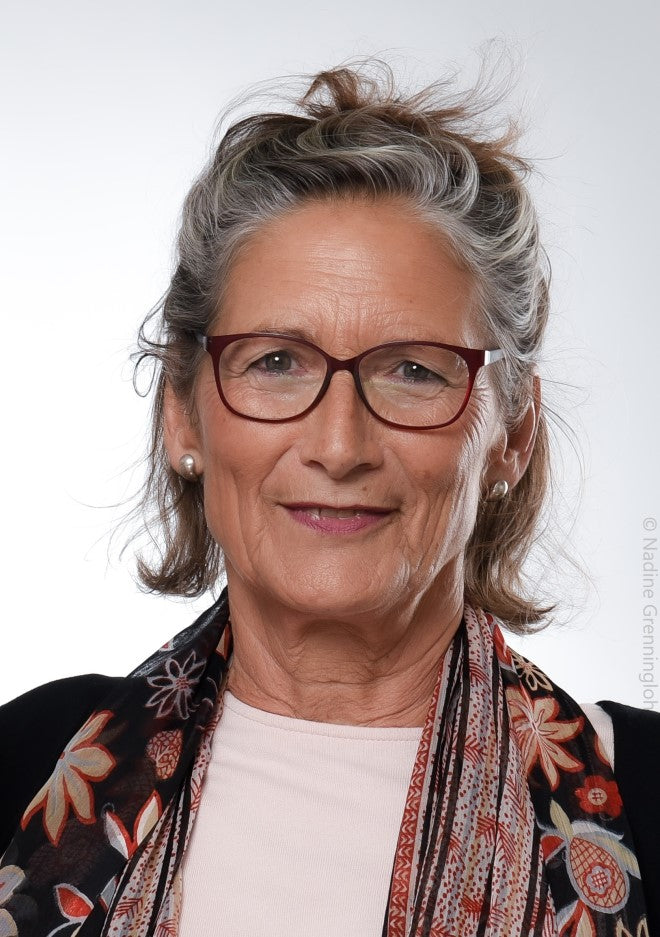
“HypnoBirthing has changed our lives!” Interview with Julia and Dr. med. Matthias Maak
“HypnoBirthing has changed our lives!” Interview with Julia and Dr. med. Matthias Maak
"HypnoBirthing helped me and my husband a lot to process our first and difficult birth experience; I was able to dissolve my fears and tension and replace them with trust. With HypnoBirthing we were able to experience three more dream births, and I myself have found my calling as a HypnoBirthing lecturer, course leader and managing director of the HypnoBirthing Society." Julia Maak and her husband Dr. Matthias Maak , who have jointly published " HypnoBirthing. The practical guide ", want to help all expectant parents to get to know and exploit the potential of HypnoBirthing, and are committed to bringing Marie Mongan's successful obstetric method closer to conventional medicine and the guidelines for clinical obstetrics.
“HypnoBirthing” according to Marie F. Mongan is a proven method of birth preparation that originated in the USA and is now also popular in Europe. How did you become aware of HypnoBirthing and how have you benefited from it?
Julia Maak: During my second pregnancy in 2013, I happened to read in a magazine that Catherine, Duchess of Cambridge, had apparently used HypnoBirthing to prepare for the birth of her first child. She was said to have had an easy and pleasant birth, and the whole family was able to leave the hospital a few hours after the birth. I was fascinated and curious, because the birth of our first child had been very challenging. I researched everything I could find about HypnoBirthing and was keen to try out the preparation method. My husband, as a doctor, was initially a little skeptical, but agreed to attend a course, try it out, and support me. His motto has always been: "He who heals is right." Our decision at the time to attend a HypnoBirthing course was to change my life and the life of our entire family. We are very grateful that we were able to experience three more wonderful, relaxed, and self-determined births.
To sum it up, I would describe it like this: HypnoBirthing helped me and my husband a lot to process the first, quite challenging birth experience and to find out together what we needed and wanted to do differently for a self-determined and relaxed birth. I was able to dissolve my fears and tension and replace them with trust and relaxation. With HypnoBirthing we were able to experience three more dream births, one of them completely pain-free. And so, through HypnoBirthing, I finally found my calling and my absolute dream job.
You are now both involved in the HypnoBirthing Society Europe GmbH (HBGE). What is the aim of this society and what does your work for and with HypnoBirthing look like?
Dr. Matthias Maak: The aim of the HBGE is that all parents who want a relaxed HypnoBirthing birth or a top HypnoBirthing course can take one with a certified HypnoBirthing course leader from the HBGE. The course leaders offer the German, quality-assured original HypnoBirthing program from the HBGE according to Marie F. Mongan. This is only taught in face-to-face or online live courses for couples. Our surveys among participants show how good the program is and how satisfied the participating parents are; 92% recommend HypnoBirthing after the birth.
The HypnoBirthing Society has several goals. Firstly, parents should have easy access to the valuable courses. To achieve this, course leaders are trained according to strict and quality-assured standards. My wife Julia, managing partner, and her team take on this work. She also offers parent courses herself, online or in her own practice, and has already successfully taught and supported numerous parents.
On the other hand, we want to continuously develop HypnoBirthing and bring it closer to conventional medicine. The current obstetric guidelines already recommend the use of many, actually most, HypnoBirthing techniques in everyday birthing. Namely breathing exercises, relaxation exercises and massage techniques. Hypnosis is also already mentioned in the guidelines, namely that hypnosis can be supported, but this is not yet an evidence-based recommendation. Further research is needed for this. And I support the HBGE in this as a voluntary scientific advisor.
In my everyday life, I like to use HypnoBirthing elements to calm myself down in stressful situations, for example. This happens frequently in my job in the clinic or when raising children.
With your practical book you want to better support expectant families in discovering the full potential of Marie Mongan's HypnoBirthing treasure. What exactly does your book offer, and is it necessary to read the original?
Julia Maak: Our book is a practical guide to the original work by Marie Mongan and is intended to provide helpful, practical instructions for parents to practice HypnoBirthing in such a way that they can anchor all the elements and use them as best as possible during the birth. We use tried and tested and new techniques for this. Based on our own experience and quality-assured surveys, we were able to determine exactly which content helps parents best. We have designed exercises, checklists and weekly plans to help parents practice all the elements well in everyday life and use them better. We have also added the latest scientific findings and illustrated everything in attractive color. Our book offers significant added value for expectant families and it works on its own. Parents who want more comprehensive information can of course also read the original work by Marie Mongan.
Her book also includes ten HypnoBirthing practice cards. How can expectant parents use these to meet their needs and desires?
Julia Maak: The cards contain practical exercises and training plans, among other things. Parents can test their own learning style and thus adapt HypnoBirthing even better to their preferences. For example, there is also a card for writing your own affirmations and a card for filling out and entering birth wishes, which mothers or parents can discuss with their birth team and hand over. The practice cards fit exactly into the maternity record or mother-child record.
HypnoBirthing is not intended to replace medical care and support during pregnancy and birth by doctors or midwives, but to provide positive encouragement and support to expectant parents during this special time. What is special about this method and how does it differ from other birth preparation approaches?
Dr. Matthias Maak: Marie Mongan has created a simple and ingenious concept of birth preparation using self-hypnosis that works and gives mothers the knowledge and confidence to see birth as something beautiful, natural and doable that they can look forward to. The exercises prepare mothers and their partners well for the birth and give them the self-confidence to experience it independently and without fear.
The role of the birth companion, usually the father, is a particularly important point in my opinion. I had a role in three births, always knew how I could help my wife, I was a part of the birth experience. The classic birth preparation that I experienced with our first child did not involve me in the preparation and birth. Classic birth preparation often focuses on medical procedures and complications. HypnoBirthing focuses on a positive, reinforcing portrayal of pregnancy and birth, the language is gentle and not medical; the aim is to promote birth through HypnoBirthing, i.e. through self-hypnosis.
HypnoBirthing is about anchoring relaxation as best as possible so that it can be optimally accessed during birth. How is this goal achieved and what conditions must be met for this to happen?
Julia Maak: The most important prerequisite for the success of hypnosis or self-hypnosis is voluntariness. In addition, there is good, professional education and information about hypnosis so that trust in the method and in the course leader can be built up. Hypnosis is not possible against one's own will or, for example, in the case of cognitive impairments. Hypnosis essentially works through continuous practice and constant repetition over several weeks. HypnoBirthing parents learn how to encourage the release of feel-good hormones such as endorphins and oxytocin. Ideally, they have practiced this relaxation response with HypnoBirthing as early as possible, at the latest from the 32nd week of pregnancy, daily, so that the body's relaxation response has been anchored as well as possible under their own responsibility.
Pregnancy and birth are not always a day of sunshine, but can also be a real challenge. How does the practical guide support expectant parents in crisis situations?
Dr. Matthias Maak: Statistically speaking, most pregnancies and births are completely uncomplicated from a medical point of view and require little or no support. Subjective perception and especially the stories of parents and doctors mostly focus on crisis situations. We doctors are also trained to think of zebras and not horses when we hear the clatter of hooves. This means that we learn to think first of particularly rare circumstances and not necessarily of the most obvious. HypnoBirthing does not want to focus on crises, but rather concentrate on the positive and help parents to find the relaxation they need. Of course there can be special circumstances and challenges, but HypnoBirthing does not have to stop in such situations. All elements can help parents to regain confidence, calm and strength. We also describe this in our book in a chapter on "unexpected turns of events".
Book tip:
Julia and Dr. med. Matthias Maak: HypnoBirthing - The practical book . Practical knowledge, exercises, checklists and weekly plans for the original method by Marie F. Mongan. With 10 practice cards. Mankau Verlag, 1st edition August 2022, flap book, color, 16 x 22 cm, 157 pp., with 10 enclosed color cards (11.5 x 16.5 cm), 22.00 euros (D) / 22.70 euros (A), ISBN 978-3-86374-658-2
Link recommendations:
More information about the guide “HypnoBirthing. The practical guide”
To the reading sample in PDF format
More about author Julia Maak
More about author Dr. med. Matthias Maak
Our social networks − for questions, criticism, suggestions











